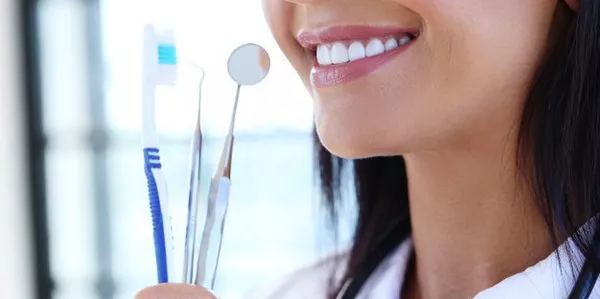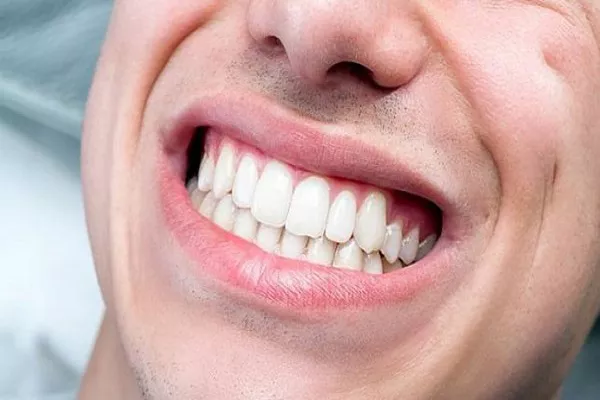After undergoing a dental filling procedure, patients often have questions regarding their post-treatment care routine. One common inquiry is whether it’s safe to use mouthwash after getting a tooth filled. While maintaining oral hygiene is crucial for overall dental health, it’s essential to understand the nuances of post-filling care to ensure the longevity and effectiveness of the dental restoration. In this article, we’ll explore the types of fillings and their setting times, sensitivity post-filling, the use of mouthwash, oral hygiene maintenance, and the importance of consulting with a dentist for personalized advice.
Types of Fillings and Setting Times
Dental fillings are commonly used to repair cavities, fractures, or other forms of tooth damage. Various types of fillings are available, each with its own unique characteristics and setting times. Understanding these differences is essential for post-filling care.
- Amalgam Fillings: Amalgam fillings, often referred to as silver fillings, consist of a combination of metals, including mercury, silver, tin, and copper. These fillings have been used for decades due to their durability and affordability. Amalgam fillings typically set within 24 to 48 hours.
- Composite Fillings: Composite fillings are made of a tooth-colored resin material that bonds directly to the tooth. They are popular for their natural appearance and versatility. Composite fillings can take about 24 to 48 hours to fully set and harden.
- Gold Fillings: Gold fillings, also known as inlays or onlays, are composed of gold alloy. While they are highly durable and biocompatible, they are less commonly used due to their cost and aesthetic considerations. Gold fillings generally take 24 to 48 hours to set.
- Glass Ionomer Fillings: Glass ionomer fillings are a mixture of glass and acrylic. They release fluoride, which can help prevent further tooth decay. These fillings may feel hard within 48 hours of placement.
Understanding the setting times of different fillings is crucial because it influences post-treatment care protocols and activities that may impact the integrity of the restoration.
Sensitivity Post-Filling
It’s not uncommon to experience sensitivity after getting a dental filling. This sensitivity may occur due to factors such as the trauma of the dental procedure, the proximity of the filling to the tooth’s nerve, or changes in the tooth’s structure. While sensitivity typically subsides over time, there are some measures patients can take to manage it:
- Avoid Very Hot or Cold Foods and Beverages: Extreme temperatures can exacerbate tooth sensitivity. It’s advisable to avoid consuming very hot or cold foods and beverages, especially in the days immediately following a filling procedure.
- Use Toothpaste for Sensitive Teeth: Specialized toothpaste formulated for sensitive teeth can help alleviate discomfort. These toothpaste products typically contain desensitizing agents that block the transmission of sensation from the tooth’s surface to the nerve.
- Avoid Abrasive Toothbrushing: Using a soft-bristled toothbrush and practicing gentle brushing techniques can help prevent further irritation to sensitive teeth.
Use of Mouthwash
While maintaining oral hygiene is essential after a dental filling, the use of mouthwash requires careful consideration, particularly in the initial stages of recovery. Here are some recommendations regarding the use of mouthwash after a tooth filling:
- Avoid Immediate Use: It’s generally suggested to avoid using mouthwash immediately after a filling, especially for patients with composite fillings. Residual colorants present in some mouthwash formulations can potentially stain composite fillings, compromising their aesthetic appearance.
- Wait for the Setting Period: Patients should wait until the filling has fully set and hardened before incorporating mouthwash into their oral hygiene routine. This typically takes 24 to 48 hours, depending on the type of filling used.
- Choose a Fluoridated Mouthwash: Once the filling has set, patients can consider using a fluoridated mouthwash as part of their oral hygiene regimen. Fluoride helps strengthen tooth enamel and can aid in preventing cavities around the filling area.
- Follow Dentist’s Recommendations: Dentists may provide specific instructions regarding the use of mouthwash based on the patient’s individual needs and the type of filling placed. It’s essential to follow these recommendations for optimal oral health outcomes.
Oral Hygiene Maintenance
Maintaining good oral hygiene is crucial for preserving the longevity of dental fillings and preventing future tooth decay. In addition to using mouthwash, here are some essential practices for post-filling oral care:
- Brush Twice Daily: Brushing your teeth twice a day with fluoride toothpaste helps remove plaque and food debris, reducing the risk of cavities and gum disease.
- Floss Daily: Flossing between teeth removes plaque and debris that brushing alone may not reach. It’s essential to floss daily to maintain optimal oral health.
- Visit Your Dentist Regularly: Regular dental check-ups and cleanings are essential for monitoring the condition of dental fillings and identifying any potential issues early on. Dentists can also provide professional cleanings to remove stubborn plaque and tartar.
Consultation with a Dentist
While the information provided in this article serves as general guidance for post-filling care, it’s essential for patients to consult with their dentist for personalized advice. Dentists can offer tailored recommendations based on factors such as the type of filling used, the patient’s oral health history, and any specific concerns or preferences.
If patients experience prolonged sensitivity, pain, or any other unusual symptoms after getting a dental filling, they should contact their dentist promptly for evaluation and appropriate management.
Conclusion
While maintaining oral hygiene is vital after a tooth filling, patients should approach the use of mouthwash with caution, especially in the initial stages of recovery. By following proper post-filling care guidelines and consulting with their dentist as needed, patients can promote optimal oral health and preserve the integrity of their dental restorations for years to come.
FAQs About Tooth Fillings
1. What is not allowed after tooth filling?
After getting a tooth filling, it’s essential to avoid certain activities to ensure the success of the restoration and promote healing. Some things that are typically not allowed after a tooth filling include:
- Avoiding hard or sticky foods: Hard and sticky foods can dislodge or damage the filling, leading to premature failure.
- Refraining from biting down on hard objects: Biting down on hard objects like ice cubes, pens, or fingernails can put undue pressure on the filling and compromise its integrity.
- Temporarily avoiding hot or cold foods and beverages: Sensitivity is common after a filling procedure, so it’s advisable to avoid very hot or cold items that may exacerbate discomfort.
- Steer clear of smoking: Smoking can interfere with the healing process and increase the risk of complications such as infection or delayed healing.
2. How do you clean your mouth after fillings?
Proper oral hygiene is essential for maintaining the health of your teeth and gums after getting a filling. Here’s how to clean your mouth effectively:
- Brush gently: Use a soft-bristled toothbrush and brush your teeth gently, paying close attention to the area around the filling. Avoid aggressive brushing, as it can irritate the gums and potentially damage the filling.
- Floss daily: Flossing helps remove plaque and food debris from between your teeth and around the filling. Be sure to floss carefully, avoiding excessive force around the filling site.
- Rinse with water: After brushing and flossing, rinse your mouth thoroughly with water to remove any remaining debris and bacteria. Swishing water around your mouth can help dislodge particles and promote overall oral hygiene.
3. Can I use mouthwash after a temporary filling?
Using mouthwash after a temporary filling depends on the specific instructions provided by your dentist. In general, it’s best to avoid using mouthwash immediately after a temporary filling to allow it to set properly. Once the temporary filling has stabilized, your dentist may recommend using a mild, alcohol-free mouthwash as part of your regular oral hygiene routine. Always follow your dentist’s recommendations for optimal results.
4. How soon after a filling can I brush my teeth?
It’s typically safe to resume brushing your teeth the day after getting a filling. However, it’s essential to brush gently and avoid putting excessive pressure on the filled tooth to prevent irritation or damage to the restoration. If you experience any discomfort or sensitivity while brushing, consider using a toothpaste formulated for sensitive teeth and consult your dentist for further guidance.






























